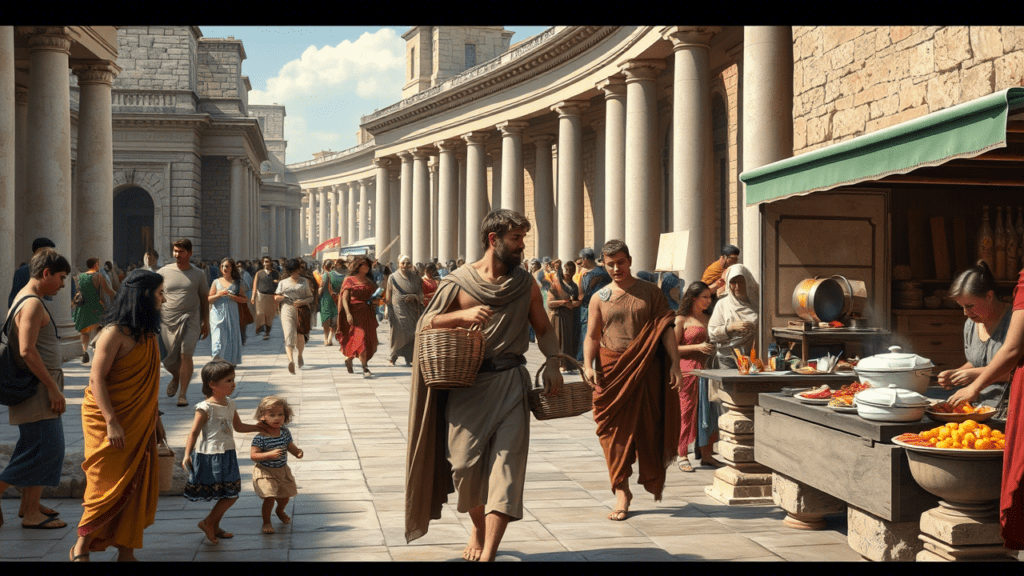The early Roman Empire (27 BCE–284 CE) was a period of relative stability and prosperity, allowing Roman civilians to lead structured and dynamic lives. Social class played a crucial role in shaping daily experiences, with stark differences between the elite and the lower classes. However, all Romans participated in the empire’s economic, social, and religious fabric in various ways.
Housing and Living Conditions The wealthy lived in spacious domus, private houses with courtyards, decorated with frescoes and mosaics. These homes had running water and private baths, offering comfort and luxury. In contrast, the majority of Romans, particularly in cities like Rome, lived in insulae—multi-story apartment buildings. These structures were often overcrowded and prone to fires and collapses. The lower floors housed wealthier tenants with better accommodations, while the upper floors were cramped and lacked proper sanitation.
Work and Economy Roman civilians engaged in diverse occupations. Wealthy landowners oversaw vast agricultural estates worked by slaves, while artisans, merchants, and laborers formed the backbone of urban commerce. Markets, known as macella, provided food and goods, with bakers, butchers, and craftsmen selling their products. Public works projects, such as roads and aqueducts, employed many unskilled laborers. Additionally, the military and civil service offered career paths for ambitious Romans seeking financial stability and social mobility.
Food and Meals Diet varied by class. The wealthy enjoyed elaborate meals, including meats, fish, fruits, and exotic spices, often served during elaborate banquets. The poor primarily consumed bread, porridge, and vegetables, occasionally supplemented with meat or fish. Street vendors provided affordable meals, such as puls (a wheat or barley porridge) and garum (a fermented fish sauce). Wine was a staple for all classes, though quality differed significantly.
Entertainment and Leisure Romans enjoyed a wide array of entertainment. The Colosseum hosted gladiatorial games, which were free for the public and sponsored by emperors or politicians to maintain favor with the populace. Chariot races at the Circus Maximus attracted massive crowds, with different factions passionately supporting their teams. Theaters showcased plays, often comedic or dramatic adaptations of Greek works. Public baths, or thermae, served as social hubs where Romans bathed, exercised, and engaged in discussions.
Family and Social Life Family was central to Roman society, with the paterfamilias, or male head of the household, holding significant authority. Women, while subordinate in legal matters, played essential roles in managing households and could wield influence through marriage alliances. Education was valued, particularly for boys from affluent families, who studied rhetoric, philosophy, and literature. Girls received a more limited education focused on domestic skills.
Religion and Civic Duty Romans practiced a polytheistic religion, worshipping gods such as Jupiter, Mars, and Venus. Public temples and household shrines (lararia) were common, and religious festivals punctuated the calendar. Civic duty was highly emphasized, with participation in local government, military service, and public ceremonies seen as honorable responsibilities.
Conclusion The daily life of a Roman civilian was shaped by social status, economic roles, and cultural traditions. Despite class disparities, Romans shared common experiences in food, entertainment, religion, and civic participation. The stability of the early empire allowed for a vibrant and structured way of life that influenced future civilizations.





